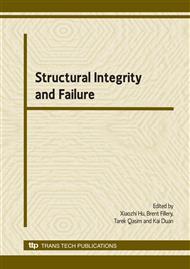p.3
p.9
p.15
p.21
p.27
p.33
Study of Altered Mechanical Properties of Articular Cartilage in Relation to the Collagen Network
Abstract:
Articular cartilage is a semitransparent elastic material that covers on the two articulating bones in synovial joints. It acts as a cushion between the bones that transfers loads from one to another while attenuating dynamic stresses and providing almost frictionless contact surfaces for normal use of synovial joints without pains. Osteoarthritis causes a chronic joint pain and it is mainly due to malfunction of articular cartilage. The mechanical function of articular cartilage is derived from its unique microstructure. Therefore, study of the relationship between the mechanical function and microstructure of articular cartilage comprehends the aetiology and pathology of osteoarthritis. Confocal microscopy permits studying the internal microstructure of buck biological tissues without tissue sectioning and dehydration. This provides a way to study the relationship between the mechanical function and microstructure of articular cartilage. Using a fibre optic laser scanning confocal microscope, this study examines the pathological status of articular cartilage in relation to the mechanical function and 3D collagen network of articular cartilage. The results show that the 3D collagen structure and the mechanical function are different between normal and arthritic cartilage. Loss of the integrity of the 3D collagen network is closely related to cartilage softening.
Info:
Periodical:
Pages:
9-14
Citation:
Online since:
April 2008
Permissions:
Share:
Citation:


